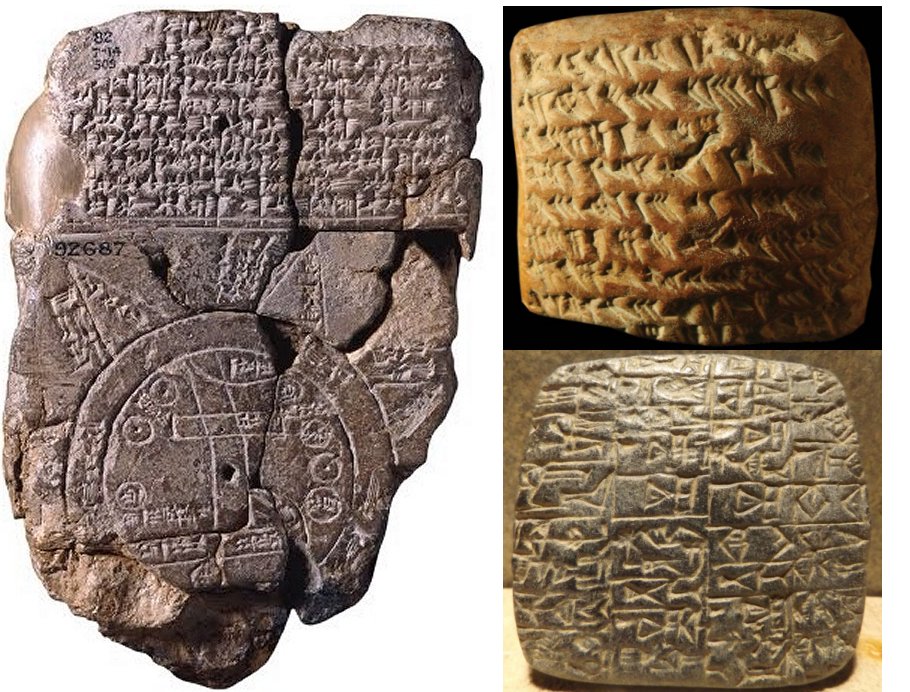AncientPages.com - Archaeologists have a made a sensational find that could re-write our ancient history.
A huge cuneiform archive consisting of 93 ancient clay tablets was unearthed on in the Kurdistan region of northern Iraq.
What the tablets record remains a mystery for the time being, but once they are deciphered we can get a much better understand of life in Mesopotamia, Babylonia and Assyria, and perhaps even the ancient neighboring kingdoms.
Widely considered as one of the earliest systems of writing invented by the Sumerians, clay tablets offer extremely valuable information about our ancient past.
Mesopotamian writing- cuneiform tablets.
According to Mesopotamian beliefs, writing is a gift of the gods, and as such, writing means both power and knowledge.
Archaeological evidence, on the other hand, suggests that this great skill has developed by the Sumerians during a long period of time. The invention of writing, dated from 5000 BC to 2000 BC, was used for keeping accounts, describe religious events, scientific achievements and keep records of extraordinary happenings, known today as ‘written history’.
Bassetki (Iraqi Kurdistan) 2017: Assyrian cuneiform clay tablets as they were discovered inside a clay vessel.
Credit: Peter Pfälzner, University of Tübingen
The discovered cuneiform archive dates from 1250 B.C, the period of the Middle Assyrian Empire.
The ancient clay tablets were found by archaeologists from the University of Tübingen.
Headed by Professor Peter Pfälzner, the team unearthed the artifacts at the Bronze Age city site of Bassetki, which was only discovered in 2013.
See also:
Intriguing Sumerian Clay Tokens – An Ancient ‘Book Keeping’ System Used Long After Writing Appeared
Mysterious Clay Tablet Reveals Babylonians Used Trigonometry 1,000 Years Before Pythagoras
Kingdom Of Mitanni: Forgotten For Millennia But Once Great Power Of Ancient West Asia In 2000 BC
Was Princess Tadukhipa Of The Mitanni Kingdom Queen Nefertiti?
Excavating in the area is currently very difficult, but researchers have been able to continue their work undisturbed even in September and October of this year -- despite the turbulence caused by the Kurdish independence referendum and the sharp responses of governments in the region.
Link To The Mitanni Kingdom
"Our finds provide evidence that this early urban center in northern Mesopotamia was settled almost continuously from approximately 3000 to 600 BCE. That indicates that Bassetki was of key significance on important trade routes," Professor Pfälzner said.
The researchers unearthed a layer from the little-known Mitanni Kingdom (approx. 1550 -- 1300) for the first time at this location.
Two Mitanni cuneiform tablets found in this level document intense trade conducted by the city's inhabitants around the middle of the second millennium BCE; business is likely to have flourished due to Bassetki's location along trade routes from Mesopotamia to Anatolia and Syria.
The city blossomed again in the subsequent Middle Assyrian Empire.
Temple Dedicated To Goddess Gula Is mentioned On One Clay Tablet
Sixty of the 93 valuable records had been deposited in a ceramic pot which was presumably used for clay tablet storage.
The vessel was discovered in a room of a Middle Assyrian building which had been destroyed; along with two further pots, it has been wrapped in a thick coating of clay.
Gula was a goddess of creation and healing.
"The vessels may have been hidden this way shortly after the surrounding building was destroyed. Perhaps the information inside it was meant to be protected and preserved for posterity," Professor Pfälzner explained.
It is not yet known if the tablets contain business, legal, or religious records. "Our philologist Dr. Betina Faist has deciphered one small fragment of a clay tablet. It mentions a temple to the goddess Gula, suggesting that we may be looking at a religious context," he added.
The science teams had now returned home to Germany and will star to decipher the writing on the clay tablets, but it’s a long process. Many of the clay tablets are unbaked and badly worn, so reading them will be a major challenge and will take a considerable amount of time.
Professor Pfälzner hopes the texts will yield a wide variety of detail about the history, society, and culture of this little-researched area of northern Mesopotamia in the second millennium B.C.
AncientPages.com








